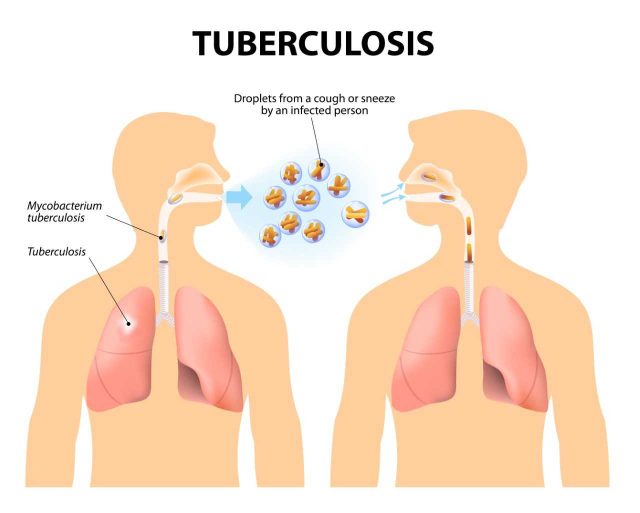Two in every five Kenyans have tuberculosis (TB) but are unaware and are spreading the disease unknowingly.
According to the National TB Coordinator Ms Wendy Ntiroke, the statistics indicated that 40 percent of Kenyans infected with tuberculosis were undetected and thus untreated.
Ms. Nkirote expressed concern that this pool of missed cases was now fuelling the spread of the respiratory disease countrywide and termed this as a dangerous trend considering that one undiagnosed and untreated individual could infect about 10 to 15 persons.
Speaking when the Ministry of Health’s Division of Tuberculosis (TB) and Leprosy Programme officials held a consultative meeting with Nakuru County Government health personnel, Ms. Nkirote further indicated that the biggest challenge in terms of childhood TB was under-diagnosis.
She added that estimates had it that about 22,000 children fall sick from TB every year in Kenya where close to 65 percent of those with TB are not diagnosed every year.
The Division of Tuberculosis (TB) and Leprosy Programme officials are currently in Nakuru to conduct a comprehensive week-long assessment of TB screening management in various workplace settings.
Some of the workplaces to be visited include factories, flower firms, and public institutions in Rongai, Naivasha, Kuresoi South, and Kuresoi North Sub-Counties.
Ms. Nkirote, who was flanked by Nakuru County Executive Committee Member (CECM) in charge of Health Ms. Roselyn Mungai, indicated that detecting TB in children was sometimes hard as it presented itself with cough, fever, failure to gain weight or weight loss and reduced playfulness, mimicking common childhood diseases and making it almost impossible to suspect without running recommended tests.
She said the undiagnosed cases could be people who had symptoms of TB like a persistent cough that lasts more than two weeks, chest pain, and fatigue but ignored the need to seek treatment.
To combat TB in Kenya, the coordinator disclosed that the National government was working with devolved units and other stakeholders in scaling up advocacy and community engagement which she said was crucial towards raising public awareness about prevention and treatment, emphasizing testing and early diagnosis.
“Many Kenyans are unaware of the risks associated with TB, including the dangers of late diagnosis and treatment. Lack of understanding translates to an increased risk of transmission,” she added.
The Coordinator explained that the fight against TB had been complicated by resistance to drugs, thus patients are placed on more expensive drugs requiring strict adherence.
The County Executive Committee Member (CECM) for Health Ms Roselyne Mungai underscored the importance of strengthening the engagement between the Public and Private sectors in creating awareness about TB prevention, screening, and treatment among the community.
She appealed for support from the National team in restocking TB therapy drugs, underscoring the national responsibility in TB management noting that data-driven supportive supervision aims to enhance the county efforts in combating TB holistically.
The CECM added that creating awareness would reduce the number of diagnosed persons who required stronger medicines to treat the more expensive forms of TB.
Ms Mungai at the same time warned that resistance to anti-TB drugs occurs when these medications are misused or mismanaged, especially when patients do not complete their full course of treatment.
Multi Drug Resistant (MDR) TB is caused by an organism that is resistant to the two most potent TB drugs whereas Extensively Drug-Resistant TB (XDR TB) is a rare type that does not respond to both the first-line and second-line TB drugs.
The CECM said there was a need to improve the country’s national health systems so that health workers could have a higher index of suspicion to test for tuberculosis and hence begin treatment immediately with the test kits used expected to be more sensitive and specific.
Ms Mungai noted that having public health promotion campaigns encouraged patients to complete their treatment as they drew support from partners, family, colleagues, and the community.
Kenya is among 30 countries burdened with a high prevalence of TB, recording 150,000 to 160,000 cases annually.
Among the undiagnosed cases, 25,000 to 35,000 individuals have open TB, meaning they are infectious without even being aware. The undiagnosed TB cases lead to increased infection within communities, resulting in more people developing a disease that could have been prevented.
TB has significant socio-economic impacts, affecting individuals’ health and their ability to work and engage in social and economic activities. Moreover, the cost of TB treatment is financially draining for affected individuals and their families, particularly the poor.
The County Government seeks to intensify the identification of TB cases, improve diagnosis, and ensure the full recovery of patients.
According to the World Health Organization (WHO), although anyone among the 2 billion persons worldwide infected with latent TB bacteria could develop active TB disease, six risk factors accounted for most of the new TB cases. These are HIV infection (19 per cent); malnutrition (27 per cent); those exposed to indoor air pollution (26 per cent); alcohol use disorder (13 per cent); diabetics (6 per cent) and active smokers (23 per cent).













